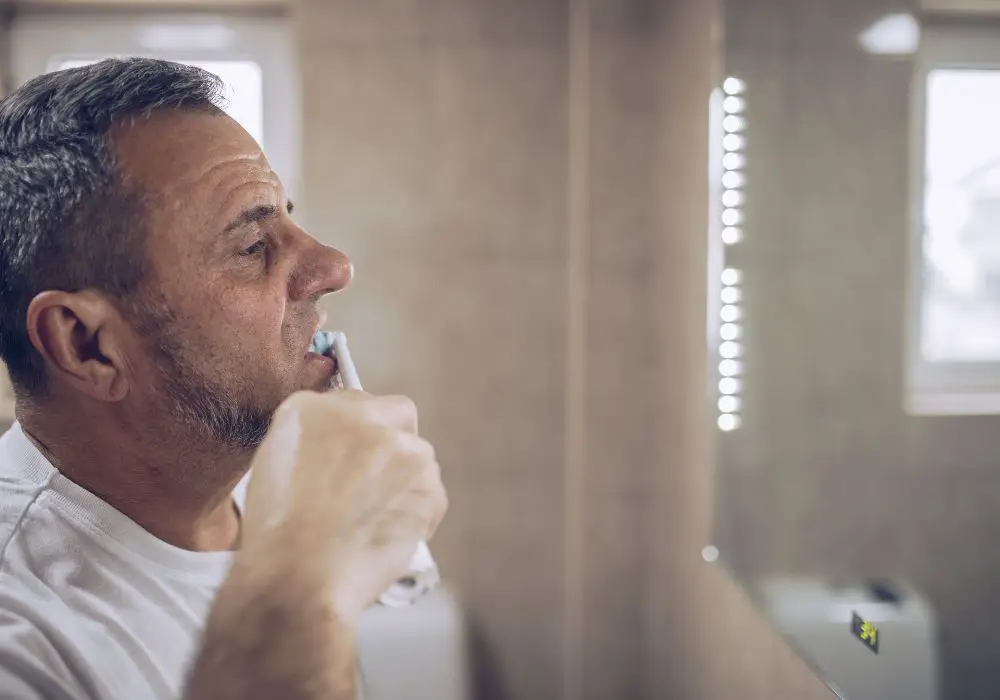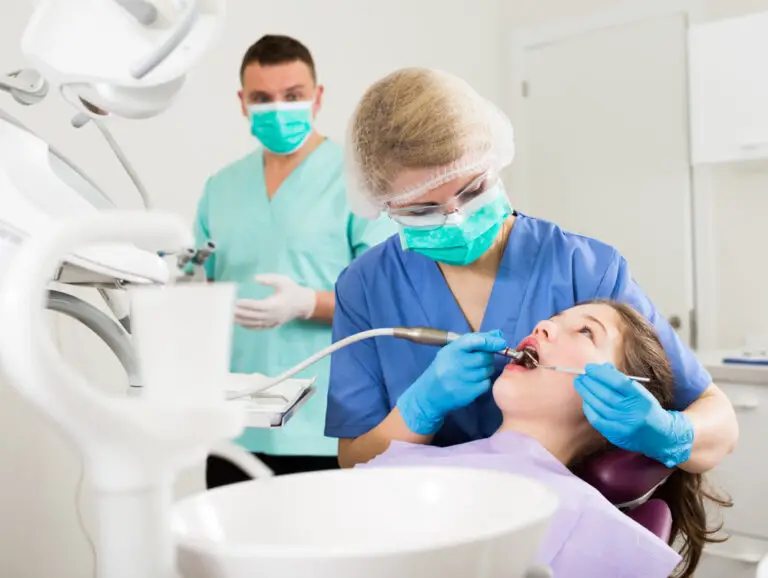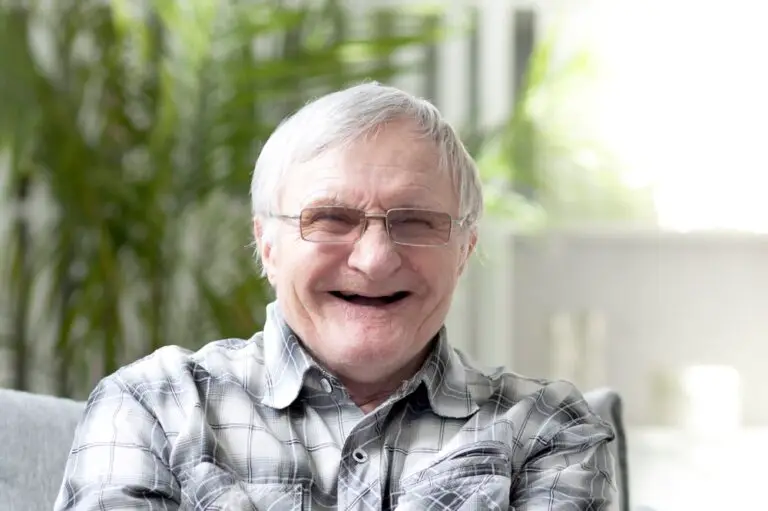The Slow Dental Shifts Causing Adult Crooked Teeth
Having a nice straight smile as a teenager only to find your teeth crowding and twisting years later can be confusing and frustrating. Why do teeth that were so perfectly aligned before start to shift and skew out of place with age?
While most assume dental growth stops after childhood, the reality is our teeth and jaws continue developing throughout life. The changes are extremely gradual – we’re talking fractions of millimeters per year. But over decades these subtle shifts in tooth position add up, eventually creating crowded, crooked smiles in adults.
Let’s look closer at why teeth lose their alignment with time:
Ongoing Jaw Growth Slowly Shifts Teeth
Contrary to popular belief, the maxilla and mandible bones of the jaw continue growing very slowly during adulthood. The incremental increases in size are difficult to perceive year to year. But between ages 20 to 70, the upper and lower jaws lengthen and widen on average 2 to 4 millimeters.
This seemingly minor orthodontic jaw change pushes teeth out of their original positions though. As the mouth cavity enlarges, the upper front six teeth especially drift outward and forward. The lower front teeth follow suit, guided by the opposing teeth.
This “mesial drift” effect flares the front teeth, causing overlap and crowding. Plus, gums naturally recede over time as you age, exposing more tooth length. The teeth effectively grow longer too, altering their angulation. Overall, continued jaw growth is a leading reason teeth shift.
Loss of Back Teeth Allows Movement Into Gaps
Your back molars act like anchors – they maintain the space and framework that holds the rest of the teeth in alignment. So when a molar is lost either from decay or injury, nearby teeth will start migrating into the empty space over time.
As front and middle teeth drift backward seeking the vacant area, they become crooked and overlapped. The opposing teeth also hyper-erupt and change angles to fill the space on top. This disruption in positioning shifts front teeth too.
Studies show losing a single molar can start a cascade effect of gradual tooth movement that overcrowds and tilts the remaining teeth out of alignment. The more back teeth you lose, the more crowding and crookedness develops up front.
Bone Loss from Gum Disease Loosens Tooth Anchoring
Chronic inflammatory gum disease destroys the bone holding your teeth firmly in place. Bone damage initially forms pockets around teeth where plaque bacteria thrive. But as bacteria proliferate, they cause worse infection and destruction of the periodontal ligament fibers anchoring teeth.
Inflamed and damaged ligaments allow teeth to loosen and sink down into their sockets. Surrounding bone also disappears as inflammation dissolves minerals and stimulates resorption. With this deteriorating foundation, teeth have nothing securing their position.
Those with severe, advanced periodontal disease often experience front teeth flaring way out as bone loss expands the upper arch size. The increased space and movement freedom then allows teeth to shift.
Bruxism Grinds Teeth Down, Altering Fit

Clenching, grinding, and other excessive chewing forces work to literally grind your teeth down over many years. This abrading away of enamel and dentin makes the biting surfaces progressively smaller and thinner. It also rounds and flattens the edges and cusps crucial for tooth interlocking.
As the size, shape, and edges change, the teeth no longer fit together properly. Gaps form where tight contact existed before. The biting edges also develop notches and chipping that alter alignment and force distribution. Such uneven wear opens the door for teeth to shift.
Bruxism’s intense stresses also stretch out the periodontal ligaments holding teeth in place. These overworked ligaments slacken and allow teeth to move more freely.
Braces Can Relapse Long After Treatment Ends
Many adults find their straight teenager smile restored by braces starts to relapse years later, with teeth crowding and overlapping again. This occurs because the fibers of gum tissue around teeth were not completely realigned and corrected by orthodontic forces.
Though braces moved the teeth, the gum fibers still retain a “memory” of the old positioning and slowly pull teeth back towards their original irregular arrangement over time. Only indefinite retainer use prevents this regressing to crookedness.
Braces also enlarged both the upper and lower dental arches, creating spacing for proper alignment. When retainers stop, that extra space disappears as jaw growth naturally narrows arches. This compresses and crowds teeth again.
Factors That Determine How Quickly Teeth Shift
The speed and severity of bite changes varies substantially per individual. But these factors impact how fast teeth will crowd and drift:
- Age – Older adults experience more cumulative damage and loosening over decades that enable movement.
- Missing teeth – The more missing teeth in the arch, the more space for shift and tilt.
- Gum disease – Increased bone loss accelerates changes in anchoring and support.
- Oral habits – Clenching, grinding and chewing behaviors help loosen teeth.
- Orthodontic history – Previous braces increase likelihood of relapse.
- Hypermobile joints – Lax ligaments enable more tooth movement.
Here are some estimates for how quickly dental changes happen by decade:
| Age Group | Rate of Change |
|---|---|
| 20s | 0.5mm per decade |
| 30s | 1mm per decade |
| 40s | 1.5mm per decade |
| 50s & 60s | 2mm per decade |
<center>**Table 1:** Average rates of tooth shifting by decade </center>
So changes accumulate faster the older you get as teeth are subjected to more external pressures over many years. But poor habits and oral disease also speed up destabilization and crowding.
Specific Areas of the Mouth Prone to Change
Though both arches lose alignment gradually, certain teeth and regions in particular shift and tilt with age:
- Front teeth – Flare out as jaw growth continues widening the smile
- Back molars – Drift forward closing gaps from missing teeth
- Bite alignment – Lowers as worn teeth decrease vertical dimension
- Midlines – Shifts as gums recede and bone deteriorates unevenly
These areas see the most movement activity and are crucial for bite function. So misalignment here causes more symptoms than other areas. Dentists take extra care to stabilize these spots.
Recognizing the Signs Your Bite Is Changing
Gradual dental changes often go unnoticed for years before becoming problematic. Be alert for these subtle indicators your bite alignment is slowly worsening:
- Teeth feel slightly looser, less snug
- Gums receding, more tooth visible
- Tooth notching or divots at gumline
- Difficulty sliding floss between contacts
- Altered gaps between front teeth
- Shifting midlines when smiling
- Back teeth not touching properly
- Changed chewing patterns
- Biting cheek, tongue or palate more
- Trouble closing lips together smoothly
Bringing such issues to your dentist’s attention early allows steps to be taken to halt progression before major misalignment and symptoms occur. Don’t delay treatment until you have severe crowding, overlapping, or bite problems.
Impact of Crooked Teeth on Oral Health

Minor crowding may seem like an aesthetic concern only, but it can contribute to complications:
Accelerated Tooth Decay
As teeth drift out of alignment, gaps between them tighten. This makes it harder to clean away plaque bacteria that cause decay. Trapped food debris also feeds the bacteria. More crookedness = more cavities.
Periodontal Disease Progression
Straight teeth are easier to keep plaque-free. But crowded, overlapped teeth accumulate more plaque which inflames gums. Gum disease destroys bone, allowing more loosening and crowding.
Jaw Joint Issues
The TMJ is very sensitive to bite alignment changes. Crooked teeth alter chewing forces and can lead to temporomandibular disorder symptoms like pain and clicking.
Bone Destruction
Abnormal biting forces from misaligned teeth accelerate bone loss in the jaw. Occlusal imbalance overloads certain areas, stimulating resorption.
Increased Tooth Fractures
Crooked teeth sustain more fractures and cracks from uneven bite force distribution. Food also wedges more readily into misshapen areas, cracking enamel.
Accelerated Tooth Wear
Crooked teeth grind against each other abnormally when chewing, wearing the enamel away faster. Food also packs into tight contacts, increasing wear.
Corrective Options for Older Crooked Teeth

If your changing bite is causing problems, a variety of methods can align teeth again:
Clear Aligner Therapy
Popular clear plastic trays like Invisalign straighten teeth gradually over months. Aligners are less invasive, easier to maintain than braces.
Traditional Metal Braces
Braces remain the gold standard for severely crooked teeth. The brackets and archwires shift teeth into proper position over 1-3 years.
Dental Bonding and Veneers
Bonding material or thin veneer coverings can reshape uneven, worn teeth for a straighter smile appearance.
Occlusal Splints and Night Guards
These devices worn while sleeping help guide teeth into more ideal positions through precise spacing. Also protects from grinding.
Tooth Extraction/Surgery
Removing damaged teeth and performing bone grafting alters spacing to allow straighter alignment.
Dentures and Dental Implants
Replacing missing teeth with partials, dentures, bridges or implants provides needed support to prevent shifting.
Permanent Retainers
Once teeth are straightened, bonded retainers on the interior surfaces keep them from regressing.
Frequently Asked Questions
Q1: Why do teeth shift after orthodontic treatment?
Braces move teeth through bone remodeling, but don’t fully correct gum fibers that still “remember” old positions. When retainers cease, these fibers gradually pull teeth back toward original arrangements. Only permanent retainers prevent all regression.
Q2: Is it normal for front teeth alignment to worsen?
Minor front tooth flaring from continued jaw growth is expected. But more severe front tooth crowding and overlapping indicates gum disease, missing molars, oral habits, or cracked teeth. See your dentist to determine if changes are problematic.
Q3: Can teeth realign themselves?
Teeth do try to naturally return to their original positions over time due to gum elasticity. This occurs most notably after orthodontic treatment without indefinite retainer wear. The slow relapse to crookedness can take years or decades though.
Q4: Will teeth continue shifting for life?
Yes, subtle changes in tooth positioning from occlusal forces, gum loosening, bone loss, and other factors will likely keep occurring throughout life. The cumulative effects get more noticeable the older you get. Good oral care and dental work can minimize changes.
Q5: Can crooked teeth be fixed without braces?
Corrected teeth will stay straighter longer. Clear aligners, occlusal splints, and dental veneers all gradually improve alignment without braces. But traditional orthodontics are still best for severe crowding or overlap. Talk to your dentist about options.







